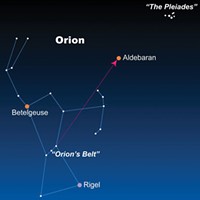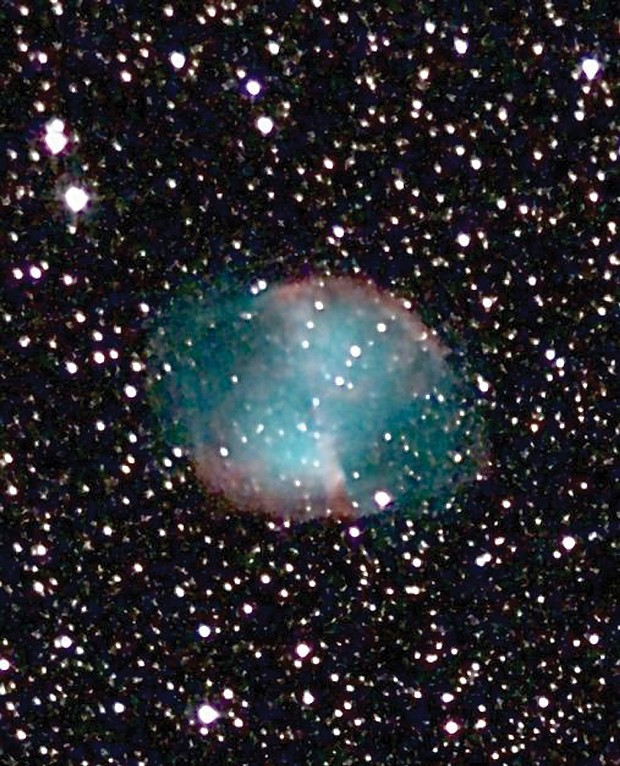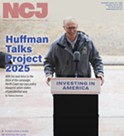[
{
"name": "Top Stories Video Pair",
"insertPoint": "7",
"component": "17087298",
"parentWrapperClass": "fdn-ads-inline-content-block",
"requiredCountToDisplay": "1"
}
]
Charles Messier (1730-1817) was a French comet hunter. Today, scattered around the globe, hundreds of amateur astronomers follow his lead every night, each striving to be the first to discover a fuzzy, luminous patch that (a) turns out to be moving against the background stars, that is, a comet; and (b) is subsequently named after its discoverer. Messier found 13 comets in his lifetime, a sterling record, especially considering he was mostly observing from the grounds of a hotel in the heart of Paris with a relatively small telescope, a 4-inch refractor.
Ironically, Messier isn't famous for his comets, but for his non-comet discoveries, compiled into a list we call the Messier Catalog. These non-comets — 110 galaxies, nebulae and star clusters — can easily be mistaken for comets, i.e. fuzzy and large enough when seen through a telescope to be confused with the real thing. His catalog, then, is a list of what, to Messier, were irritating, comet-like anomalies that didn't move. Nowadays his "anomalies" are the main reason amateur astronomers put up with cold nights, balky equipment and long drives away from city lights. These "deep sky objects" are the jewels of the night sky, to be gawped at and photographed by each succeeding generation of sky watchers. And every spring, astronomers take part in what are known as "Messier marathons," when it's possible — just — to spot all 110 in one night.
Perhaps the prettiest of Messier's deep sky objects is the 27th in his list, M27, the first "planetary nebula" to be found. The "Dumbbell Nebula," as it's usually called, was discovered by Messier on July 12, 1764. It's not too surprising it was the first planetary nebulae to be found, since M27 is the most impressive of all of them, with a diameter about a quarter that of the full moon and magnitude of 7.6.
It's not bright enough to be seen with the naked eye, but what you'll see through astronomical binoculars, or better still a telescope, is a dumbbell-shaped cloud of glowing ionized (excited) gas surrounding and expanding away from a central white dwarf star. You're observing a spectacular example of the last hurrah of most stars. Having exhausted its hydrogen and helium fuel, the star has collapsed into a central core before rebounding as a red giant. The next and final stage sees a very dense white dwarf star, with a mass about that of the sun and volume about that of Earth, radiating energetic x-rays that ionize the gas shed from the original star, causing it to glow.
With M27, this final stage started sometime between 3,000 and 48,000 years ago (planetary nebulae are hard to pin down), and the cloud has been expanding ever since. One reason astronomers are so vague about how long this has been going on, is that they don't know how far away the nebula is. The best we can say is that it's no more than 3,200 light years away (light having left there about the time of the Trojan War) and no less than 500 light years (when Columbus sailed the ocean blue). Observations with the Webb Space Telescope should narrow down this ridiculously wide range.
Try to spot M27 with binoculars on a clear, moonless night. Although it's best seen in September, it can be found fairly easily in winter, when cold skies are darkest. In December, look for the Dumbbell Nebula in the early evening in the west, using the Summer Triangle as a guide. It's in the constellation Vulpecula, about one-third of the way from Altair heading up to Deneb.
Barry Evans (he/him, [email protected]) is enjoying capturing deep sky objects with his "smart" telescope.
Speaking of...
-

Multi-messenger Astronomy and Gold Rings
Jun 8, 2023 -

Orion and the Pleiades
Jan 12, 2023 - More »
Comments
Showing 1-1 of 1
more from the author
-
Rise and Fall of the "Sunshine Vitamin," Part Two
- Jul 11, 2024
-
Rise and Fall of the 'Sunshine Vitamin,' Part One
- Jul 4, 2024
-
The Myth of the Lone Genius
- Jun 6, 2024
- More »

































